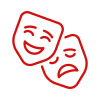🥇 Top Brass & High Hats: Executive Echelons and Elevated Expressions ⛑️
Ever wondered how those in the highest ranks of any organization came to be known as the “top brass”? The roots of this expression are grounded in military traditions but have fascinating twists and sartorial pivots across history.
Origin Story: 🏰🌿
The Gold Oak Leaves Theory posits that in the British army’s late-nineteenth-century hierarchy, senior officers prominently displayed gold oak leaves on their caps, earning the prestigious brass title. This resplendent decoration segregated them visually as wielders of authority and power.
Meanwhile, John Ciardi’s Napoleonic Twist suggests an etymological detour through French fashion—specifically, the habit of French officers folding their cocked hats (chapeaux à bras) and tucking them under their arms indoors. The British, in their delightfully mischievous manner, might have morphed ‘bras’ into ‘brass’, coining brass hats for the officers’ higher-ups.
Related & Similar Terms 🎩
- Bigwig: Derived from the large wigs worn by people of importance in the 18th century.
- Fat Cat: Inferring a corpulent, affluent, and powerful person.
- Big Cheese: Just like top brass, implying someone important and influential.
- Head Honcho: Directly referring to the person in charge.
- Kingpin: Originating from the game of bowling, denoting the central pin, most pivotal.
- High Muck-a-Muck: Borrowed from the Chinook Jargon, semantically indicating an important chief.
Exploring Antonyms 👟
- Underling: A person of lower rank or status.
- Subordinate: Denotes someone of lesser authority under another’s command.
- Peon: Informal, diminutive term for someone in a lowly position.
- Worker Bee: Reflecting someone in the trenches with day-to-day operational roles.
